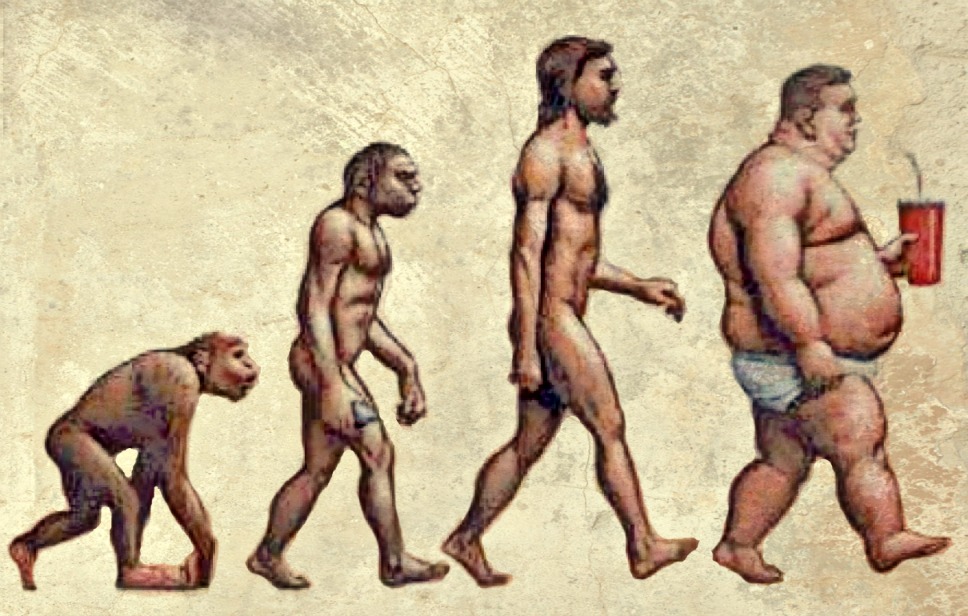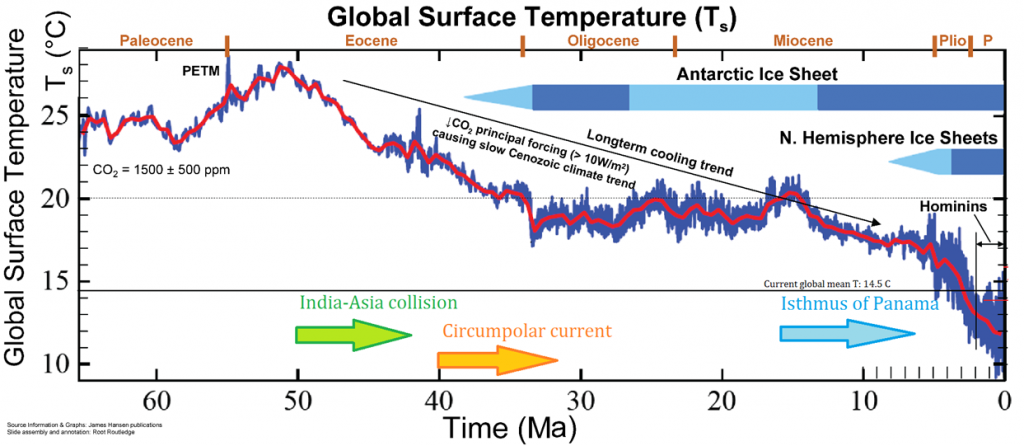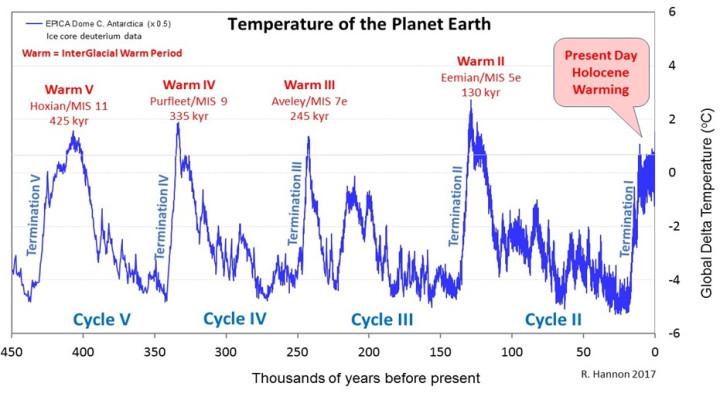
“Ketones are the cleanest and healthiest fuel“.
Survival of the Fittest.
The first time I ever encountered the concept of ketosis was from reading “Survival of the Fittest” (edition 2004) by Mike Stroud, chapter 5, “Crossing Antarctica”. Mike Stroud is a medical doctor, nutritionist and frequent companion to Sir Ranulph Fiennes on various adventures and expeditions. Their goal on this occasion was to be the first ever to cross Antarctica unaided (1993), carrying all their own food on sleds pulled by themselves.
To keep weight down most of the food would have to be fats. Fats provide 9 Calories per gram but both carbohydrates and protein only 4 Calories. Over 70% of their total calories would be coming from fat, making their diet ketogenic. They would consume 5500 Calories per day. Fiennes would expend on average 8500 Calories per day and Stroud 6700 Calories. The remaining Calories came from progressively using their own body fat reserves. (By weight the diet contained 57% fat, 35% carbohydrates and 8% protein. Calories attributed to those figures define the diet.)
During the 95 day expedition, blood and urine samples were taken at 10 day intervals. Between days 20 and 30, when climbing the ice shelf to the plateau, Stroud burned an average of 11,650 Calories per day (measured using isotope-labelled water). Food consumption remained at only 5,500 Calories daily.
Blood glucose is “normally” between 4 and 10 millimoles per litre and going below that you move towards confusion, coma and death. During the final 30 days of the expedition Fiennes recorded 0.2 millimoles and Stroud 0.3 millimoles blood glucose levels. Stroud states in his book that ketones being used as fuel in place of sugar and the brain having had time to adapt to their use, is “one possible explanation” for this extraordinary outcome. When I read this in 2004 it caught my attention but it was not until almost 10 years later that I would stumble across the subject of ketones once again.
Scientific studies are not ethically capable of going to the extremes experienced by Stroud and Fiennes. Their experience is incredibly unique and revealing because elite athletes do not even experience such extremes.
Why was the experience of Mike Stroud and Ranulph Fiennes so metabolically extraordinary? Why was there no full anticipation of deep ketosis? The answer lies in our Western monoculture dogma. Dogma unconsciously developed through 12 thousand years of agriculture, culminating with a McDonald’s on every main street and in every Shopping Mall. Today the average American consumes 152 lb of sugar per year. The Food and Nutrition Board of the United States Institute of Medicine today recommends, for good health, that we eat 45-65% carbohydrate, 10-35% protein, and 20-35% fat as a percentage of total energy. Ketosis has simply been the invisible elephant in the room all along.
Glucocentric Human Energy Model
The muscles and liver are the main store of accessible energy in the body, in the form of glycogen. Prolonged moderate activity exhausts glycogen supplies in a few hours so constant feeding with carbohydrates is necessary to avoid hypoglycemia (debilitating low blood glucose). Fat stores supply fuel only for low level activity.
We live in a glucocentric monoculture, addicted to carbohydrates and toxic pharmaceutical drugs. The “Health” industry – pharmaceutical manufacturing and sales, genetic testing, workplace drug testing and all of the hospitals and medical services in the U.S. totaled $24.4 billion in revenues last year (2018), making it the most profitable sector of the US economy! A great success? The state of health of people has never been worse. The average American male between the ages of 19 and 64 taking 9 medications per day. We have ever increasing epidemics of obesity, diabetes, heart disease, cancer, thyroid disease; all metabolic issues at route. It’s hard to think of anything in history that comes even close to the sheer scale of this abject failure. Compounding the problem is the presence of a total refusal to acknowledge any responsibility whatsoever.
Twelve thousand years of agriculture has culminated in fossil fuel generated nitrogen fixing, Bayer/Monsanto glyphosate herbicide, genetically modified plants producing their own pesticide and total corporate control over seeds. Producing one calorie of high yield grain requires one calorie of fossil fuel. In just a few generations farming shifted from “ecological” mode to full scale “industrial” mode. No rotation or diversity of crops is necessary today. Livestock in factory farms don’t graze on grass and pigs exist in aluminium cages with manure pits beneath.

Evolution has been continuous for up to 3.5 billion years. Humans have been around for a few million years at the most. Agriculture did not exist until 12,000 years ago. Modern agriculture has been with us only 100 years, livestock feed factories 50 years.
We are omnivores, hunter gatherers, nomadic. Humans need a varied diet, rich in appropriate fats, proteins, minerals and vitamins; not petrochemical fed grains or animals fed on them either. We don’t need supermarket shelves crammed with products full of chemicals with unpronounceable names, preserving or rendering addictive the processed petro-grains!
Nitrogen fixing is the limiting factor in plant growth. Today’s high yield farms use bioavailable nitrogen produced from petrochemicals. Before the 1920s nitrogen fixing was exclusively by bacteria in the roots of certain plants (pulses). Humans also have co-evolved with bacterial microbes (microbiome). The human gut contains around 5 pounds of bacteria outnumbering human cells by a factor of 10 and containing at least 200 times more DNA than our human DNA. Most people don’t even know that this is what they see when they poop every day. Those friendly microbes need to be fed correctly too! Quite simply put; we have a genetic program specifically optimised for living wild. When allowed to be driven by profit and market forces, civilization seriously fails to fit this genetic program.

No, the key is not to look to our paleolithic past for an answer. The key is to look directly at our own genetic programming and understand how it works. This includes epigenetics, the switching on and off of genes. We are genetically flexible through epigenetics and this helps us survive but for sustained health we need to thrive not just survive. We need to run the optimal genetic programs.
Optimal Human Energy Model
Hybrid cars use petrol as the main fuel. Electricity generated by the main engine or harvested from braking is stored in batteries. Separate electric motors use the electricity. The cost of developing and producing such technology is astronomical – but doesn’t even come close to the complexity of human metabolism. However, we can use this familiar model to describe the basics of how ketosis works…
The main human power storage is body fat – that’s our “tank of petrol”. When fat is burning as fuel it produces some glucose (gluconeogenesis). Glucose then charges the glycogen battery in the muscles and liver. Some glucose is used directly to continually power a few glucose dependent processes and specialised cells, such as blood cells.
When the body is tuned optimally fat is converted to ketone super fuel (ketogenesis). Just a minimum level of glucose continues to be generated to keep the ancillary systems working. Ketones, being the cleanest burning and most efficient fuel, represent (in partnership with fatty acids) the primary fuel. With improved engine tuning there is less and less need for glucose (almost zero). The glycogen battery still gets fully charged when at rest and can be accessed to supplement strenuous exercise. Adrenaline can induce a blood glucose surge for a short power boost.
Hypoglycemia is impossible and there is no critical requirement for feeding during prolonged exercise.

Ketones are the cleanest and healthiest fuel
Our two “energy models” are stripped down to the core. Each model can have many details added to it. The oxidation of amino acids for energy is common to both. Some amino acids are glucogenic and some ketogenic. Although there has been good research carried out in the past decade there are still many gaping holes in the actual science and biochemistry.
It is stunning that until very recently there was practically zero research on the fundamental metabolic role of ketones. Without malicious intent being involved this is simply not possible. I can’t believe that the science and medical professions are so incredibly stupid for this to be oversight (Though I’m not sure about that either!). Epilepsy provides a clear example…
Back in the 1930s there were no drugs available for epileptics. Everyone knew that fasting controlled most seizures. Everyone also knew that fasting can’t go on indefinitely. To simulate the biochemical effects of fasting the “ketogenic diet” was created . Many indigenous peoples have natural ketogenic diets. This diet fully cured 80% of epileptics and the remainder were significantly improved.
When drugs were created to treat epilepsy the use of a healthy ketogenic diet was almost totally abandoned and this situation remains today. Children are put on toxic drugs – with devastating side effects – one drug after the other when each one fails in turn. They are never even informed that there is a ketogenic option – because that’s free and requires no medical intervention!
Yes, the general message is… “Keep on eating your sugar (all carbs!). Come back when we can add diabetes type 2 and we’ll give you insulin, amputate your limbs and give you a guide dog for your blindness, then come back again when we can add diabetes type 3 (Alzheimer’s). Don’t worry, we have other drugs to deal with the side effects…”.
The Quaternary Ice Age
Don’t tell me you didn’t know that we are in an ice age! Hard to imagine perhaps with all the media and political hysteria over so called “Climate Change”. Our Quaternary Ice Age has been on the go now for 2.58 million years. How long have we had “agriculture”? 12 thousand years?
We are towards the end of the 52nd interglacial warm period inside this Ice Age. Such relatively short warm periods are when temperatures are near their highest (they each last from 10 to 12 thousand years) . When glaciation recommences average temperatures will drop by 8°C to a global average temperature of around 6.5°C, from our current global average of 14.5°C. Glaciation periods usually last around 110 thousand years.
Hopefully some parts of the Earth will still sustain agriculture because with a projected 11 billion mouths to feed in the near future that could be a problem. Low CO2 levels also mean that plants don’t grow very well. When CO2 gets down to below 160 ppm then plant life can’t survive. It was down to about 220 ppm at the end of the last glaciation period. CO2 levels drop when it gets colder because it dissolves into the oceans. CO2 levels rise when the oceans warm – for the same reason a warm can of soda gives of more gas than a cold one.

The Time scale of the above graphic is “Million Years”.
Since anything recognisable as a “human” started to walk on Earth we’ve been in an Ice Age. We have literally always been in an ice age! Most of that time has seen extensive glaciation with much lower temperatures than today. It’s no accident that agriculture only took root recently when the ice receded. Perhaps it’s not even the first time it’s happened. Humanity has always had to cope with scant carbohydrate food supplies in general. The climate was generally cold. Food mainly consisted of roots, berries, fish, shellfish, seaweed, wild grains and whatever animals could be caught. The plush fruits, vegetables and grains we know today didn’t exist before agriculture developed them.
Stroud and Fiennes went profoundly ketogenic in the extreme cold of the Antarctic. Carrying light weight foodstuff both inside their own bodies and on sleds, they had simply slotted into their natural, optimal, inherited, fat burning, ketone producing genetic program. For once somebody even bothered enough to measure it!

Multidimensional Ketones
Ketones have a multidimensional role in the human body. As well as being a supply of the cleanest and healthiest fuel, β-hydroxybutyrate (βOHB) also “signals” outside of cells. This links the environment (in this case the diet) and gene expression. In other words – ketones switch genes on and off – resetting appropriate genetic programs.
Well look deeper into epigenetics (gene expression) later on. Suffice to say for the moment that ketones provide protection against inflammation, they protect the nervous system and they allow mitochondria to produce more heat for warmth.
Cold exposure (no coincidence) also has epigenetic effects in the same direction – increasing brown fat in the adult body, altering the hypothalamus (heat regulation) and vastly reducing sensitivity to pain. Endurance exercise (no coincidence) shares some of those epigenetic effects also.
Carbohydrate makes body Fat
If ketosis is the core of our optimal health, energy and general well-being, then what’s going on with carbohydrates? Why is there even a genetic program associated with carbohydrates?
Well, our ancestors didn’t have refrigerators. The home refrigerator was only invented in 1913 so people have always had problems storing carbohydrates or any other foods for that matter. Different cultures developed methods of storage involving cooking, freezing, drying, salting and fermenting. Honey can be used to preserve foods, but you have to find it first.
Going with the seasons the best solution, as demonstrated by bears preparing to hibernate, is simply to eat what you can find. Our natural way of storing seasonally available carbohydrates is to use insulin to push glucose into our fat cells and store it there – like the bear – with apparently endless capacity for storage expansion as the current explosion of obesity shows! If you try to do this while still being ketogenic, active and hunting then you won’t store fat. You have a so called “flexible metabolism”. Carbohydrates are burned as you eat them. If however you stop exercising, continue eating mostly carbohydrates day after day then the fat storage genetic program goes into full swing.
Carbohydrate Addiction
Let’s say you have decided to go full tilt into fat storage mode. You decide to binge on delicious carbs (think “supermarket”). Your fat burning ability gets closed down to prioritise fat storage. The genetic program for burning fat is literally switched off and you can’t just switch it back on by stopping eating the carbohydrates. Once closed down getting it going again (especially if you are sedentary) is very progressive and this epigenetic reset only begins when ketones start up again.
Meanwhile if you do exercise for sustained periods or eat lots of sugar you get ups and down of insulin and waves of hypoglycemia. Eat more carbs to stop the hypoglycemia and the cycle continues. Today, for most people this cycle never, ever stops. You become addicted to carbs, not only driven by hypoglycemia; many sugars themselves are more addictive than alcohol. Some sugars (in bread,pasta) accompany gluten protein which goes directly to the opiate receptors in the brain. White bread has a higher glycemic index than sucrose!
Hypoglycemia is NOT normal – it is impossible to have if you are in ketosis.
The video clip here shows what severe hypoglycemia looks like…
Medicine describes ketosis as a survival mode and the result of starvation. Likewise they view the slow process of adjusting to ketosis, which varies from person to person, as an “Adaptation”, instead of recovery from a devastating long term addiction. The clear signs of any addiction are first of all the inability to stop and secondly, unpleasant withdrawal symptoms.
The transition from the non-flexible metabolism of carbohydrate addiction to ketosis is usually called “Keto Adaptation”. “Carb Addiction Recovery” would be a far more appropriate term but here we’ll call it Keto Activation. Full Keto Activation can take a few weeks or several months depending on the individual. Ketones are initially used mainly by the brain and heart. Skeletal muscles take time to fully function on ketones, from 4 to 6 months for some and perhaps longer for others.
Petrochemical Food
Petrochemical fed plant foods are basically the only reason we can support a population as large as we have already. In the 1920s a typical US corn farmer produced about 20 bushels (a bushel is just over 36 litres) per acre and today he can produce 220 bushels per acre. Producing one calorie of this high yield corn takes one calorie of fossil fuel. Producing a factory fed cow (including the corn it eats) consumes 35 gallons of oil. It used to take 4 to 5 years to fatten a cow on a farm but today it’s 14 months in a factory! It’s estimated that 2 out of 5 people would never have even been born without this unnatural agricultural revolution. (ref 11)
It’s clear that pumping food out of the ground at this rate is going to result in mineral depleted soils and nutritional depletion of crops. Making cattle, herbivores (grass eating) eat this corn inevitably makes them sick. Industrial quantities of antibiotics, hormones and chemicals are necessary to keep the animals alive let alone grow at freakish rates. This gives just a hint towards the problems humans can anticipate for their own health just one step further up the food chain. What defense do we have against being sucked into the resulting glucocentric and nutritional abyss? Are we destined to live to the tune of the marketers, giant agribusiness corporations (Cargill – the biggest privately owned corporation in the world!) and lobbyist influenced governments. Are we guaranteed a shortened healthspan and all the chronic diseases of modern civilization?
There is a solution
It doesn’t take a lot to figure out that despite the burgeoning population world wide (mostly Africa!) there is an overall surplus of food. It’s just the wrong food! Look around – the problems almost everywhere are the same; epidemics of obesity and diabetes. One tenth of corn production ends up as ethanol in cars. (Ironic that corn required oil to be grown in the first place) It even goes into plastics. It’s not that we can’t provide healthy food; we aren’t even trying. Could everyone afford to live on a healthy ketogenic diet? Not unless industry decides to stop killing people for profit and the medical profession stops playing along with it. Once people are aware of the issues it’s up to them to stop buying toxic food – the market will change if nobody buys their products.
Meanwhile you can certainly manage to make the necessary changes for yourself and the health benefits (and financial savings) are probably incalculable.
References for all of the keto series:
- https://www.cell.com/trends/endocrinology-metabolism/fulltext/S1043-2760(13)00156-2
- Jeff S. Volek, Daniel J. Freidenreich, Catherine Saenz, Laura J. Kunces, Brent C. Creighton, Jenna M. Bartley, Patrick M. Davitt, Colleen X. Munoz, Jeffrey M. Anderson, Carl M. Maresh, Elaine C. Lee, Mark D. Schuenke, Giselle Aerni, William J. Kraemer, Stephen D. Phinney. Metabolic characteristics of keto-adapted ultra-endurance runners. Metabolism, 2015; DOI: 10.1016/j.metabol.2015.10.028
- https://www.ncbi.nlm.nih.gov/books/NBK26882/
- https://www.sciencemag.org/news/2012/01/first-oxygen-users
- https://bio.libretexts.org/Bookshelves/Introductory_and_General_Biology/Book%3A_Introductory_Biology_(CK-12)/5%3A_Evolution/5.5%3A_Evolution_of_Eukaryotes
- https://www.ncbi.nlm.nih.gov/pmc/articles/PMC3957730/
- https://en.wikipedia.org/wiki/Ketone
- https://www.ncbi.nlm.nih.gov/pmc/articles/PMC4176946/
- https://www.cell.com/cell-metabolism/pdf/S1550-4131(16)30355-2.pdf
- Survival of the Fittest – Mike Stroud
- Michael Pollan “The Omnivore’s Dilemma”
- http://www.thesallyedwardscompany.com/sallyedwards/sally-edwards-news.php?article=8
- https://www.triathlete.com/2019/02/nutrition/the-greatest-nutrition-lessons-of-dave-scotts-career_353431
- https://www.em-consulte.com/en/article/80600
- https://academic.oup.com/fqs/article/3/2/61/5475954
- https://juniperpublishers.com/crdoj/pdf/CRDOJ.MS.ID.555746.pdf
- https://onlinelibrary.wiley.com/doi/pdf/10.1111/j.1467-3010.2008.00706.x
- https://www.researchgate.net/publication/324157111_Potential_Synergies_of_b_-Hydroxybutyrate_and_Butyrate_on_the_Modulation_of_Metabolism_Inflammation_Cognition_and_General_Health
- http://genesdev.cshlp.org/content/26/3/271.full
- http://www.ketotic.org/2014/01/babies-thrive-under-ketogenic-metabolism.html
- https://www.ncbi.nlm.nih.gov/pmc/articles/PMC3280569/
- https://books.google.fr/books?id=PmMhBQAAQBAJ&pg=PA79&lpg=PA79&dq=cold+exposure+ketone+levels&source=bl&ots=sboucv9-0L&sig=ACfU3U02xcUHb9Cwi1dn4_muhS-rlC24mg&hl=en&sa=X&ved=2ahUKEwj7i6zN5oTlAhXJxYUKHXFqBhUQ6AEwBnoECBEQAQ#v=onepage&q=cold%20exposure%20ketone%20levels&f=false
- https://podcastnotes.org/2018/07/03/attia-patrick/
- https://www.amazon.com/Biochemical-Individuality-Roger-Williams/dp/0879838930/ref=sr_1_1?keywords=biochemical+individuality&qid=1570277237&sr=8-1
- note: While animal cells readily convert sugars to fats, they cannot convert fatty acids to sugars. (But they can convert them to ketones)
- note: Acetyl-CoA can be converted into pyruvate and lactate (lactic acid) through the ketogenic pathway.
- note: oxaloacetate is made from pyruvate (from glucose) but pyruvate itself is a ketone (though this fact is usually never mentioned
